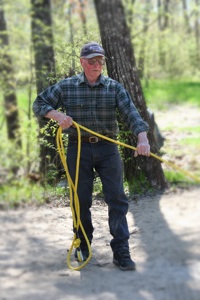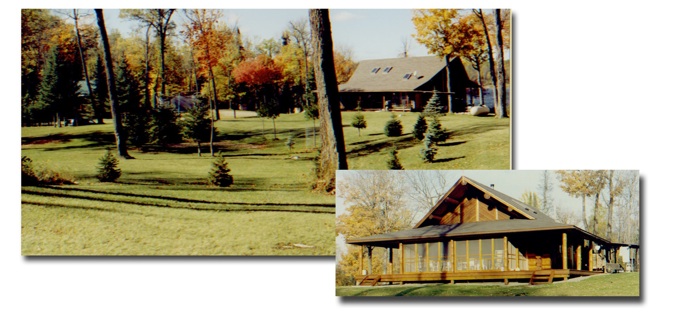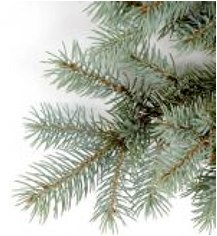Jim & Julene Delesha




By Bernie Troje
Our “Links” are full of surprises. Just as the woods nurture the individual in us to emerge, or at least allows this to happen, the observable results can be startling.
Who’d expect, miles from pavement, at the end of a gravel road, to find an expansive lawn, carefully pruned trees and bushes, setting off a compound including an authentic log home, a large, finely carpentered “bunkhouse,” a fancy but extremely useful pole barn filled with state-of-the-art maintenance tools and machines to keep the grounds in its state-of-perfectly-controlled nature? All the result of years of brushing and burning while maintaining the natural rolling forest floor. Without the buildings it could be a carefully designed wilderness golf course. Indeed, all it’d need is the greens.
Painstaking efforts have been taken to turn individual, old-growth trees into nursery specimens, to cultivate islands of spruce and balsam as they’ve sprung up in the newly created open areas. The spacing and choice and “placement” of these remnants of a wild woods is landscape architecture at its best.
The surrounding wilderness, a pristine lake surrounded by mature deciduous and coniferous trees, as well as the expansive northern sky above, more apparent because of the clearing, frame this homestead, underscoring the contrast which makes each a compliment to the other. The views this space affords are simply spectacular.
This open space is welcoming. Nothing is enclosed or confining. Walk the property on a summer evening as a year old fawn darts here and there.
The lake and dock are invitations to a broader perspective of water, shoreline, and compound. It’s easy to trace the year that turned a resort-deer camp into the Delesha family retreat. Only one of a number of the old buildings remains, a less than carefully carpentered drop-siding cabin by the shore, a storage facility now on its way to demolition.
Going from there to the southwest area of the clearing is the nearly completed bunkhouse for Jim’s sons’ families and his hunting buddies. The pre-fab logs and complementary shake siding, the eyelid overhang off the front, the open side deck, generous screened porch and green corrugated metal roof with its generous overhang and broad fascia boards certainly must be inviting to the Delesha’s guests.
Between this and the pole barn is the open-wall shed. Its overhanging roof and wall-less sides protect Jim’s woodpiles, his fuel source, from the elements yet permit the logs to properly dry. As he continues to expand the boundaries of his landscaping, the trees he takes down heat his home in the winter.
Past the woodshed is the pole barn. Inside is Jim’s new Japanese tractor, his third. He’s added a metal super-frame to protect it from the trunks and branches of trees he culls from the about to be extensions of his “yard.” Several super-heavy duty lawn tractors and their grass cutting and brushing implements sit waiting for the next assignment. The walls are hung with heavy duty ropes and pulleys, the shelves neatly arranged with numerous tools, each in every size, for maintaining the machinery that aide in the probably unimaginable numbers and kinds of projects Jim has completed over the years to bring his property to its current state.
It’s almost impossible to exaggerate anything about Jim’s accomplishments on Rush Island Lake. It’s a reminder of the story of a preacher who stops to admire a prosperous farm. He says to the farmer pitching hay, “You and God certainly have accomplished a lot here.”
“Yes,” the farmer replies, “but you should have seen it when God was working on it by himself.”
If the place wasn’t so obviously carved out of the woods, it might be possible to think this is the way it’s always been or should be. Just as if the Twin Cities were always there on the banks of the Mississippi.
Jim and Julene raised six children in the White Bear Lake area, a northeast suburb of St. Paul. An important part of this family’s history for the past fifty-five years has been this 28 acre plot on the southwest shore of Rush Island Lake.
In the 1950’s when Jim, his family and hunting and fishing buddies first started coming up to this spot, it was a resort-hunting camp with several modest cabins.
As the years went on and the resort went up for sale in the 1980’s, Jim and a friend purchased it together. What began as a practical way to own the place became impractical, and Jim bought out his friend.
What Jim has put into developing this property makes it clear that most other cabin owners, summer residents, play at woodsman-ship. Leave a place for a few seasons and nature reclaims it. A local handyman with a chainsaw might cut a few trees that spoil the view or threaten to fall across the driveway or on the roof. A few dogwood bushes might be transplanted to block out the neighbor. The shoreline cleared of reeds and cattails for a beach.
Or worse, a bulldozer might to go the other extreme and turn lakeshore into a city lot. The fertilized lawn goes down to the beach, the shoreline erodes, and the cabin is razed to make way for a climate-controlled log-lodge where families watch their plasma TV’s and sit in the hot tub.
The Delesha compound is an alternative for those looking for a multi-decade project that makes the wild livable by enhancing the natural attributes which draw people to northern Minnesota in the first place.
There are no bulldozer blade scars. A rock outcropping Jim admittedly gave some thought to dynamiting remains. The land’s gently rolling contours separate and pull together the many unique natural and man made features Jim has carefully added or preserved over the years. It’s become an open invitation to stroll, to pause, and to marvel at each feature nature provided and Jim improved.
At first it was partridge and deer hunting. After the purchase, cabins were demolished and a large mobile home accidentally burned down on November 3, 1990 – just thirty feet from the log home being built at the time. It’s not clear the cause and his kids who were staying there at the time don’t talk about it.
Jim is an electrician and has had help from his sons. His memories include steam rising from the lake and beaver dams that killed trees in the swamp. Once a moose was stuck in the bog and was being eaten alive. Jim put it out of its misery.
In 1902 the Campbells logged Buck Lake and blazed the trail that comes right by the Delesha house. It ended on County 4 and Highway 36, just a trail to get between lakes.
Now the property is settled. Jim can spend an entire day mowing grass or, in the fall, vacuuming up three dozen loads of leaves. Jim wonders how the pioneers made it.

Painstaking efforts have been taken to turn individual, old-growth trees into nursery specimens, to cultivate islands of spruce and balsam as they’ve sprung up in the newly created open areas.


“You and God certainly have accomplished a lot here.”
“Yes,” the farmer replies, “but you should have seen it when God was working on it by himself.”



